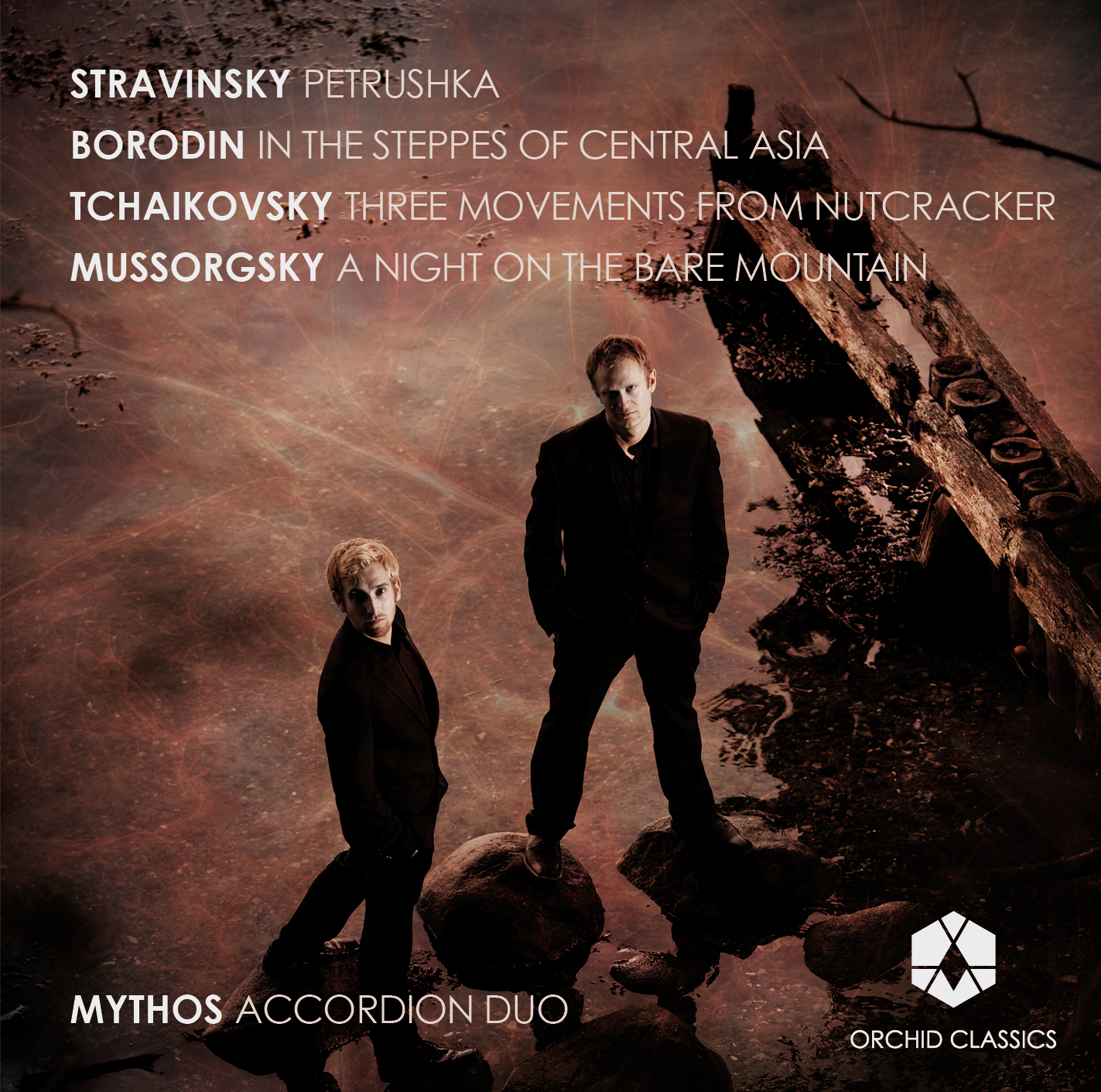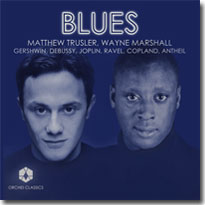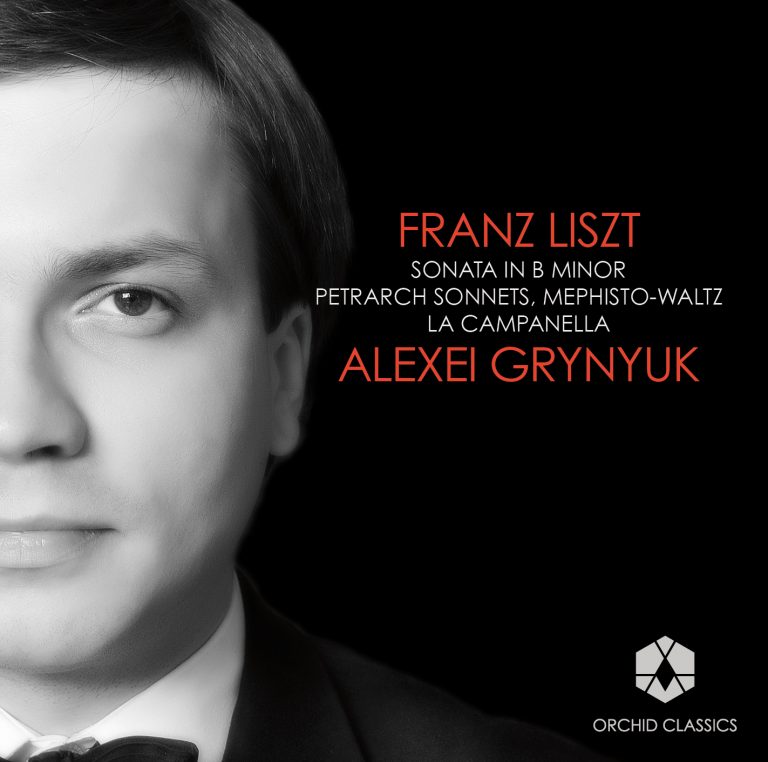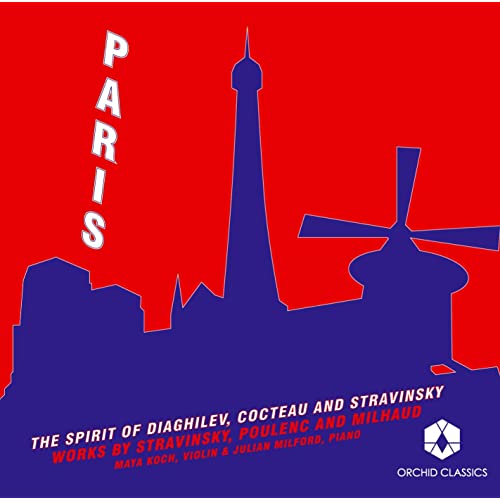Artist Led, Creatively Driven

Stravinsky, Borodin, Tchaikovsky, Mussorgsky
Mythos Accordion Duo
Release Date: April 2013
ORC100029
IGOR STRAVINSKY (1882-1971)
Petrushka (1911)
First scene: The Shrovetide Fair
Second scene: In Petrushka’s Room
Third scene: In The Moor’s Room
Fourth scene: The Shrovetide Fair (Evening)
ALEXANDER BORODIN (1833-1887)
In The Steppes Of Central Asia (1880)
PYOTR ILYICH TCHAIKOVSKY (1840-1893)
3 Movements from The Nutcracker (1892)
Miniature overture
Arabian Dance
Trepak
MODEST MUSSORGSKY (1839-1881)
A Night On The Bare Mountain (1860-67, rev.1886)
MYTHOS
Bjarke Mogensen (accordion)
Rasmus Schjærff Kjøller (accordion)
All music transcribed and performed by MYTHOS
On this CD, four great composers come together to unfold various aspects of life and landscape, story-telling and myth, in 19thcentury Russia, their vast homeland. All the music heard here is famous already, known all over the world from theatres and concert halls and countless recordings – and it is famous for being expertly-scored orchestral music. Yet here those dazzling works are played on two classical accordions in the hands of a couple
of brilliant young academy-trained Danes. That does sound rather like a fairy-tale by Hans Christian Andersen, so let us take a closer look at the bayan and at the musical masterworks that we are going to hear, transcribed and performed by award-winning accordion duo MYTHOS, a.k.a. Bjarke Mogensen and Rasmus Schjærff Kjøller.
The Bayan
The duo takes its name from the instrument they play, a Pigini Mythos bayan, the very exclusive top make of the most advanced instrument in the (Russian) accordion family. Like the piano or the organ, the bayan (spoken
with the second syllable stressed: bayán) can play almost anything, and like the organ, the bayan is essentially a wind instrument, or more precisely, it functions much like the reed pipes of an organ. Yet the bayan tops both the piano and the organ in one crucial respect: the bayan can truly ‘sing’. The bellows allow the performer to directly control the delivery of a phrase in the same way that a singer will do, or someone playing a wind instrument or even a bowed stringed instrument. Also, not least in a superior bayan, the constantly changing physical distance between the two keyboards of the instrument can be used to clearly separate, in accoustic as well as musical terms, the sounds that are heard to emerge on either side of the player’s body. One moment, a mellow, uniform stream of sound, the next, a chord that cracks almost like a whiplash; now a clearly defined leading voice with its accompaniment, now an unearthly buzzing sound that grows from nothing to a plaintive roar as in Gubaidulina’s De profundis. If all of this, and more, can be expected from one bayan, no wonder that a finely attuned duo of virtuosic bayan players will allow themselves to look into even the grandest orchestral repertoire for scores to transform without in any way compromising the original music – and indeed, whilst immediately attractive to any listener, clever bayan transcriptions have been known to actually open the ears of professional listeners to hidden facets of familiar scores. Even though admittedly the instruments do weigh their proud 16 kilos each, a bayan duo travels light and if need be can perform standing up. So, all kinds of audiences can be served in all manner of venues, making it possible to take great and thrilling music to the people, capturing the ears and the hearts and minds of listeners who may never have heard anything like the wide repertoire that MYTHOS bring along – everything from folk songs and dances and Baroque chorales and harpsichord pieces over 19th-century popular classics to brand-new music commissioned by MYTHOS from today’s youngest avant-garde composers, or indeed Igor Stravinsky’s snappy ballet music for the old marketplace story of Petrushka (1910-11).
Igor Stravinsky (1882-1971) – Petrushka (1910-11)
Looking back on the entire 20th century for a single iconic piece of modern music, the answer is immediately Le sacre du printemps, the last score in the epoch-making triad that was commissioned from Stravinsky by ground-breaking impresario Serge Diaghilev for his Ballets Russes: The Firebird (1909-10), Petrushka (1910-11) and The Rite of Spring (1911-13). Interestingly enough it was Petrushka that managed to herald the kind of ‘thoroughly modern music’ that would characterize the 1920s and the brave new world that rose and flourished during the decade between the end of the devastating First World War and the disastrous Wall Street collapse in 1929. With Petrushka Stravinsky prophetically went one step ahead of his time and of himself as well. Two steps, actually – if Petrushka had been composed in 1920-21 or indeed in 1930-31, everyone would be pointing to this score as a perfect embodiment of the musical Twenties, ushering in those unforgettably ‘new’ times with a flourish, or indeed closing the door on them with elegant finality. At 100+ years, the Petrushka music has lost nothing of its bracing vitality, its wit and the sheer power of its storytelling in music. Working in 2010-11, the Danish bayan duo MYTHOS used the 1910-11 full score of Petrushka as well as the composer’s own piano duet reduction from the same time. Petrushka is divided into four tableaux, the first and the last of which are set out of doors at an 1830s Shrovetide fair at the Admiralty Square in St. Petersburg, while the two middle sections are set indoors at the small open-air marketplace theatre run by a showman. The outer panels of the ballet are teeming with people enjoying themselves, buying and selling, showing off to each other, or looking to see what is going on at the showman’s puppet theatre. The rousing music reflects all of this, the full orchestra is called for, with scattered vignettes offering moments of a more delicate scoring. The situation is reversed in the indoor scenes – here, a novel kind of descriptive orchestral chamber music takes over, with the full orchestra poised to join in when feelings run high between the three puppets who are the protagonists of the ballet: little Petrushka himself, the fearsome Blackamoor, and the Ballerina, who is Petrushka’s love and the Blackamoor’s trophy.
First Tableau: It is a fine winter’s day, and the fair is in full swing. Suddenly the curtains of the little theatre are drawn back, revealing three puppets who are called to life by the flute solo of the Showman and rather surprisingly are then seen to perform like real people amongst the public in the square below.
Second Tableau: We are backstage in the room of Petrushka. He is unhappy, and he is in love. The ballerina actually joins him, entering from her own room, but he proves too much for her refined taste, and she flees. Frustrated, Petrushka hurls himself against a portrait of the Showman on the wall: it is all his fault, isn’t it?
Third Tableau: The Blackamoor’s room is no less exotic than he is. Unlike Petrushka he is an alpha male, and the Ballerina is irresistibly drawn to him. Petrushka storms in on the love scene, only to be kicked out of the room by his rival.
Fourth Tableau: It is evening now, and the fair has reached its climax – wet-nurses dance, coachmen dance, a bear slowly turns to the strains of its keeper’s clarinet, there are gipsy girls and a merchant throwing bank notes around. So, all is great with the world, it would seem; but wait, what is that commotion at the little theatre over there? Petrushka is being pursued by the Blackamoor, in vain the Ballerina tries to intervene, the Blackamoor uses his scimitar on Petrushka, Petrushka collapses and dies. Snow has started to fall in the dark, and the Blackamoor and the Ballerina make themselves scarce, while the Showman demonstrates to the crowd that the Petrushka
character is really nothing more than a lifeless puppet, see? The crowd disperses, and the Showman drags his battered puppet away. But all of a sudden Petrushka appears on the roof of the little theatre, mocking the Showman and the Showman’s audience and the ballet audience watching in the real-life theatre and indeed everyone who falls under the spell of this story as told in purely musical terms by Igor Stravinsky.
© Svend Ravnkilde 2013
Alexander Borodin (1833-1887) – In The Steppes Of Central Asia (1880)
In his time Alexander Borodin was well known both as a chemist and a physicist and as a composer. In chemistry, Borodin’s Law was named after him, and in music he belonged to a small but influential group of Russian composers known as ‘The Five’ or indeed, ‘The Mighty Handful’. They aimed for an original Russian approach to musical composition and developed their brand of National Romanticism mainly in largescale orchestral works and operas, strongly influenced by Russian folk music. Borodin’s In the Steppes of Central Asia is a musical picture of a caravan passing by, and in the score the composer wrote: ‘In the silence of the monotonous steppes of Central Asia is heard the unfamiliar sound of a Russian song. From the distance we hear the approach of horses and camels and the bizarre and melancholy notes of an oriental melody. A caravan approaches, escorted by Russian soldiers, and continues safely on its long way through the immense desert. It disappears slowly. The notes of the Russian and Asian melodies join in a concord that dies away as the caravan disappears in the distance.’
Pyotr Ilyich Tchaikovsky (1840-1893) – 3 Movements from The Nutcracker (1892)
The score for the ballet The Nutcracker (1892) by Tchaikovsky belongs to his most well-known music and indeed is some of the best-known classical music worldwide. Especially for Christmas, the ballet is staged everywhere for the amusement of children, their parents and their grandparents. From The Nutcracker we have selected three movements to form a tiny suite, which has ties to Stravinsky’s Petrushka and Borodin’s Steppes but also joins those works in forming a Russian backdrop for the spectacular concluding item on the CD. The three pieces we have chosen are Miniature Overture, Arabian Dance, and Russian Dance (a ‘trepak’).
Modest Mussorgsky (1839-1881) – A Night On The Bare Mountain (1860-67, rev.1886)
‘I grew up listening to old Russian tales told by my nanny and it was from this contact with this familiar and intimate living genius of a people that I felt the first and strongest impulsion.’ Another famous member of the Mighty Handful was Modest Mussorgsky. His A Night on the Bare Mountain had a long history with quite some detours before it was posthumously fashioned into the version that we know today. After almost a decade spent on various attempts at getting the piece done to satisfaction, Mussorgsky wrote to Nicolai Rimsky-Korsakov in July 1867 that: ‘The Witches – which is a rather vulgar title, and so to say a nickname for my composition, is in reality St. John’s Night on the Bare Mountain. If my memory does not trick me, the witches gather round this mountain, gossiping whilst they await the arrival of their Dark Lord – Satan. When he arrives, they form a circle around the throne on which he is sitting in the shape of a mighty goat, and they worship him… On the top of the score I have written the following:
1. The gathering of the witches, gossiping and chattering
2. The company of Satan
3. Celebration of the Dark Lord – Satan
4. Sabbath
If my composition is played, I would be grateful if this is written in the programme, to clarify the form for the listeners. The form and the character of my work are Russian and original.’
The version known today is by Rimsky Korsakov and dates from 1886. He took the ideas and the material that Mussorgsky had left behind and put it all together in a slightly different form, even adding a different conclusion:
1. Subterranean noises of supernatural voices
2. Apparition of the spirits of darkness and, after them, of Chernobog, the Black God
3. Celebration of Chernobog, and the Black Service
4. Sabbath
5. At the culmination of the Sabbath, the bell of a little village church is heard from afar; its ringing disperses the spirits of darkness
6. Daybreak
© Rasmus Schjærff Kjøller 2013
MYTHOS
MYTHOS’ repertoire covers a wide range of genres. Numerous collaborations with living composers have resulted in many new works dedicated to MYTHOS. The duo also excels in re-arranging works for orchestra by famous classical composers. MYTHOS comprises Bjarke Mogensen and Rasmus Kjøller who both grew up on the Danish Island of Bornholm. Here they started playing together at a very early age and within a few years they won the national contest for accordion duo. The duo has performed at festivals and concerts all over Europe and in the United States where in 2011 they made their American debut in Carnegie Hall.
MYTHOS was the First Prize winner of the Danish Radio Chamber Music Competition 2011 and also received the prize for best performance of a contemporary work. In 2012 MYTHOS took the First Prize in the Almere International Chamber Music Competition. Furthermore they received the prize for best performance of a Dutch piece for Jacob Ter Veldhuis work for accordion duo, “Views from a Dutch Train”.
The duo often works with actors and singers and has an ongoing collaboration with actor Henrik Koefoed performing E.T.A. Hoffmann’s famous story The Nutcracker with the music of Tchaikovsky. The duo has also played on Danish Television with the songwriter Steffen Brandt.
Bjarke Mogensen
At the age of 13 Bjarke Mogensen made his debut as soloist in a German TV broadcast with the Munich Symphony Orchestra. In 2011 Mogensen had his solo debut at Carnegie Hall, New York, and in 2012 he received First Prize in the prestigious European Broadcast Unions “New Talent” competition in Bratislava.
He studied at the Royal Danish Academy of Music as a pupil of Geir Draugsvoll and today he teaches chamber music at the same place.
He has given solo recitals all over the world from New York to Moscow, from Iceland to Turkey.
He has performed chamber music with violinists Augustin Dumay and Gidon Kremer and cellist Andreas Brantelid.
As a soloist he has worked with orchestras such as the Moscow Virtuosi, Kremerata Baltica, Slovak State Philharmonic Orchestra, the Danish National Symphony Orchestra and the Copenhagen Philharmonic, conducted by maestros such as John Storgårds, Lan Shui, Rolf Gupta, Leos Svarovský, Beat Furrer and Vladimir Spivakov. A long succession of collaborations with prominent living composers has resulted in many new compositions – concertos, chamber music and solo works – dedicated to Bjarke Mogensen.
Bjarke Mogensen’s repertoire is almost unlimited, with a span ranging from folk music and accordion classics over his own arrangements and transcriptions to brand new works for accordion.
Rasmus Schjærff Kjøller
During his student years at the Royal Danish Academy of Music with the professors Geir Draugsvoll and James Crabb, Rasmus Schjærff Kjøller has received many grants and scholarships; in 2012 he was awarded the annual Léonie Sonning Music Grant. Furthermore he has been studying in Toronto with Joseph Macerollo and has played in masterclasses with Matti Rantanen, Mika Vayrynen and Claudio Jacomucci. As a prizewinner in international competitions he has played in festivals around Europe, including Paris, Heidelberg, Malmö and Vilnius and cooperated with New Music Ensemble Ars Nova in Malmö (Sweden), the Jutland Ensemble, theEsbjerg Ensemble and the Royal Danish Orchestra.
As a performer, Rasmus S. Kjøller is open to music from a whole palette of genres, from the classical repertoire through to contemporary music, to tango and pop/rock, and he often collaborates with composers fromtoday’s avantgarde music and the pop/rock scene.
Rasmus performed in a production of Jarry´s absurd theatre piece “Ubu Roi” (1896) that in 2008 was nominated for the highest Danish theatre award, the Reumert Award, and he was likewise seen and heard in “The Apple Tree of Fortune” at Anemone Teatret, a tiny but renowned Danish venue. Rasmus takes a deep professional interest in the pedagogical approach to his instrument, the classical accordion, and a Kodaly-based accordion teaching book is beginning to take shape; currently he teaches classical accordion pedagogics at the Royal Danish Academy of Music in Copenhagen.
‘CD of the week’ (Danish National Radio)
“…Petrushka positively soars on two accordions… A fun, suavely executed release.” (Gramophone)









